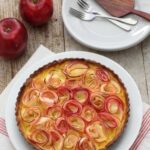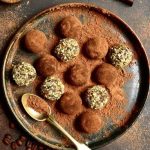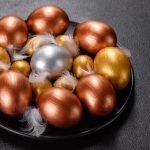Have you ever wondered how to make cake decoration with icing sugar that will take your baked creations to the next level? Icing sugar, also known as powdered sugar or confectioner’s sugar, is a versatile ingredient commonly used to add sweetness and decorative flair to cakes. In this article, we will delve into the art of cake decoration with icing sugar, exploring the importance of this technique in elevating the visual appeal of your desserts.
Cake decoration with icing sugar is not just about making your cakes look pretty; it is also about adding a personal touch and enhancing the overall presentation. Whether you are decorating a birthday cake, wedding cake, or simple cupcakes, using icing sugar can transform your baked goods into works of art. With the right tools and techniques, you can create stunning designs that will impress your guests and leave them wanting more.
In the following sections, we will explore everything you need to know about cake decoration with icing sugar. From the necessary tools and ingredients to step-by-step guides on making different types of icing sugar and applying them to various cakes, we will provide you with all the tips and tricks you need to become a master at decorating with icing sugar.
So grab your piping bag and get ready to unleash your creativity in the world of cake decoration.
Overview of Necessary Tools and Ingredients for Cake Decoration With Icing Sugar
Tools Needed for Cake Decoration
When it comes to decorating cakes with icing sugar, having the right tools is essential for achieving professional-looking results. Some of the basic tools you will need include piping bags, various piping tips for different designs, a spatula or offset spatula for spreading icing smoothly, a turntable for easy rotation while decorating, and a cake scraper for creating smooth surfaces.
Ingredients Required for Icing Sugar
To make icing sugar for cake decoration, you will need a few key ingredients. The main ingredient is powdered/confectioners’ sugar, which provides the sweet base for the icing. Other common ingredients include egg whites or meringue powder (for royal icing), butter or shortening (for buttercream), water or milk to achieve the desired consistency, and flavorings like vanilla extract or cocoa powder for taste.
Additional Supplies
In addition to tools and ingredients, there are some additional supplies that can come in handy when decorating cakes with icing sugar. These may include food coloring gels or powders to tint your icing in different colors, edible decorations like sprinkles or fondant cutouts to add texture and visual interest, and stencils or impression mats for creating intricate patterns on your cakes. Remember that creativity knows no bounds when it comes to cake decoration with icing sugar.
Preparation of the Cake Base Before Starting the Decoration Process
Selecting the Right Cake Base
Before diving into the decoration process with icing sugar, it is crucial to start with the right cake base. The type of cake you choose will determine how well the icing sugar adheres and how the final result looks.
For example, a light and fluffy sponge cake may be more prone to absorbing moisture from the icing sugar, while a denser cake like a pound cake can hold up better. Consider factors such as flavor, texture, and stability when selecting your cake base.
Leveling and Crumb Coating
One important step in preparing the cake base for decoration is leveling it to ensure an even surface for the icing sugar. Use a serrated knife or leveler to trim any dome that may have formed during baking.
Once leveled, apply a crumb coat by spreading a thin layer of frosting or ganache over the entire cake to seal in any loose crumbs. This will create a smooth foundation for the icing sugar decorations and prevent crumbs from mixing into the final design.
Chilling and Stabilizing
After leveling and crumb coating the cake, it is recommended to chill it in the refrigerator for at least 30 minutes to set the frosting and stabilize the structure. Chilling not only makes it easier to handle and decorate the cake but also helps prevent any melting of the icing sugar once applied.
A chilled cake provides a firmer surface for intricate designs and ensures that your decorations stay intact during serving.Preparing your cake base effectively is key to successful cake decoration with icing sugar. By following these steps for preparation, you can set yourself up for creating stunning designs that will impress your guests and make any occasion special.
Step-by-Step Guide on How to Make Different Types of Icing Sugar for Cake Decoration
When it comes to cake decoration, choosing the right type of icing sugar is crucial for achieving the desired look and taste. There are several different types of icing sugars that you can make at home to add a personal touch to your cakes. Here is a step-by-step guide on how to make different types of icing sugar for cake decoration:
- Confectioner’s Sugar: To make confectioner’s sugar, simply place granulated sugar in a blender or food processor and blend until it reaches a powdery consistency. Sift the powdered sugar to remove any lumps before using it for decorating your cakes.
- Royal Icing Sugar: Royal icing sugar is perfect for creating intricate designs and decorations on cakes. To make royal icing sugar, combine confectioner’s sugar with egg whites or meringue powder until you achieve a thick, smooth consistency.
- Buttercream Sugar: Buttercream frosting is a popular choice for cake decoration due to its smooth texture and versatility. To make buttercream sugar, mix confectioner’s sugar with softened butter and vanilla extract until you reach your desired consistency.
Experimenting with different types of icing sugar can help you create unique designs and flavors for your cakes. Whether you prefer the simplicity of confectioner’s sugar or the intricate details of royal icing, mastering the art of making various types of icing will take your cake decoration skills to the next level.
With these step-by-step instructions on how to make different types of icing sugars for cake decoration, you can let your creativity run wild and personalize your baked creations like never before. Remember to practice patience and precision when working with icing sugar to achieve professional-looking results on your cakes every time. So go ahead, gather your ingredients, tools, and start experimenting with different types of icing sugars for stunning cake decorations.
Techniques for Applying Icing Sugar on Various Types of Cakes
When it comes to cake decoration with icing sugar, the techniques used can truly make a difference in the final result. Whether you are looking to create a simple and elegant design or a more elaborate and intricate pattern, mastering the application of icing sugar is key. Here are some techniques that you can use to apply icing sugar on various types of cakes:
- Piping: Piping is a classic technique that involves using a pastry bag fitted with a specific tip to create decorative patterns on the cake. You can use different types of tips to achieve different designs, such as rosettes, shells, or swirls. Practice piping on parchment paper before moving onto your cake for better control.
- Spatula or Palette Knife: Using a spatula or palette knife to spread and smooth out icing sugar on the cake can create a clean and modern look. Start by applying a thin layer of icing sugar to cover the entire surface of the cake, then use the spatula or palette knife to create texture or patterns as desired.
- Stenciling: Stenciling is a fun technique that allows you to create intricate designs on your cake using stencils and powdered icing sugar. Simply place the stencil on top of the cake, sift powdered icing sugar over it, then carefully lift off the stencil to reveal your design. Practice with different stencil designs for unique decorations.
Each of these techniques offers its own unique approach to applying icing sugar on cakes. Experimenting with different methods will help you discover your preferred style and allow you to create stunning decorations that will impress your friends and family at any occasion.
Remember, practice makes perfect when it comes to cake decoration with icing sugar. Don’t be afraid to try new techniques and get creative with your designs. With time and patience, you’ll be able to master the art of decorating cakes with beautiful icing sugar creations that not only look amazing but taste delicious too.
Tips for Creating Intricate Designs and Patterns With Icing Sugar
Creating intricate designs and patterns with icing sugar can truly elevate the look of your cakes and make them stand out. One important tip to keep in mind when working on such designs is to start with a clean canvas. Make sure your cake base is smooth and even, as any imperfections will be highlighted once you start decorating with icing sugar.
To make intricate designs, you can use piping bags and different types of nozzles to create various shapes and patterns. For example, a round nozzle can be used for creating dots or writing, while a star-shaped nozzle can help you create beautiful borders or rosettes. Experimenting with different nozzles and techniques will allow you to discover what works best for the design you have in mind.
If you’re looking to add more dimension to your cake decorations, consider using stencils with icing sugar. Stencils can help you create detailed patterns on your cakes with precision. Simply lay the stencil over the cake surface and gently dust icing sugar over it. When you lift the stencil, you’ll reveal a beautifully intricate design that will impress your guests.
| Tips for Creating Intricate Designs | Patterns With Icing Sugar |
|---|---|
| Start with a clean canvas | Use piping bags and different nozzles |
| Experiment with different techniques | Consider using stencils for detailed designs |
Troubleshooting Common Issues When Working With Icing Sugar for Cake Decoration
When it comes to cake decoration with icing sugar, there may be times when things don’t go according to plan. It’s important to troubleshoot common issues that may arise during the decorating process to ensure a successful outcome. One common problem that decorators encounter is lumpy or grainy icing sugar, which can ruin the smooth finish of the cake decorations.
This issue usually occurs when the icing sugar is not sifted properly before use. To prevent this, make sure to sift the icing sugar using a fine-mesh sieve before adding any liquid ingredients.
Another common issue when working with icing sugar for cake decoration is air bubbles in the icing, which can result in an uneven texture on the finished product. This can be avoided by gently tapping the bowl of icing sugar on the countertop to release any trapped air bubbles before applying it to the cake. Additionally, using a spatula to mix the icing gently can help minimize air incorporation and create a smoother consistency for decorating.
Additionally, if you find that your icing sugar decorations are not holding their shape or are melting too quickly, consider adding a stabilizing agent such as cream of tartar or corn syrup to your icing mixture. These ingredients can help improve the stability and structure of your decorations, making them better suited for intricate designs and patterns. By troubleshooting these common issues and implementing necessary adjustments, you can elevate your cake decoration skills and create beautiful designs with icing sugar.
| Common Issue | Troubleshooting Tip |
|---|---|
| Lumpy or Grainy Icing Sugar | Ensure proper sifting before adding liquid ingredients |
| Air Bubbles in Icing | Gently tap bowl on countertop and mix frosting gently |
| Melting Decorations | Add stabilizing agent like cream of tartar or corn syrup |
Inspiration and Ideas for Creative Cake Decoration Using Icing Sugar
When it comes to cake decoration, the possibilities are truly endless when using icing sugar. Whether you are a seasoned baker or just starting out, getting creative with icing sugar can take your cakes to the next level. From simple designs to intricate patterns, there are so many ways to make your cakes stand out using this versatile ingredient.
One of the most popular techniques for cake decoration with icing sugar is piping. Piping allows you to create beautiful designs and shapes on your cakes using a piping bag and various tips. For beginners, starting with simple swirls and dots can be a great way to get comfortable with piping before moving on to more complex designs. You can also experiment with different colors of icing sugar to add an extra pop of color to your creations.
If you’re looking for inspiration, consider looking at online tutorials or cake decorating books for ideas on how to use icing sugar creatively. You can draw inspiration from nature, geometric patterns, or even popular trends in home décor and fashion. Don’t be afraid to try new techniques and experiment with different styles – after all, part of the fun of cake decoration is letting your creativity shine through in your designs.
In addition to traditional piping techniques, you can also try your hand at stenciling, painting with icing sugar, or even creating 3D decorations like flowers and figures. The key is to have fun and let your imagination run wild when it comes to decorating cakes with icing sugar. With a bit of practice and patience, you’ll be amazed at the stunning creations you can make using this simple yet versatile ingredient.
Conclusion
As we wrap up this guide on how to make cake decoration with icing sugar, it is essential to emphasize the creativity and artistry that can be expressed through this medium. Icing sugar opens a world of possibilities for enhancing the appearance of your cakes, making them not only delicious but also visually stunning. Whether you are a beginner or an experienced baker, experimenting with different techniques and designs can elevate your baking skills to new heights.
In conclusion, mastering the art of cake decoration with icing sugar requires practice, patience, and a willingness to explore your creative side. By paying attention to the details, utilizing the right tools and ingredients, and following step-by-step instructions, you can create intricate designs and patterns that will impress your friends and family. Don’t be afraid to try new ideas or techniques – it’s all part of the learning process.
So go ahead, gather your supplies, preheat your oven, and get ready to embark on a journey of sweet delights. With the knowledge and skills gained from this guide, you have the confidence to create beautiful cake decorations using icing sugar. Remember, the key is to enjoy the process and have fun exploring the endless possibilities of decorating cakes with this versatile ingredient. Happy baking.
Frequently Asked Questions
How Do I Use Icing Sugar to Decorate a Cake?
Using icing sugar to decorate a cake is quite simple yet effective. You can sift the icing sugar over the cake using a fine mesh sieve for a light dusting or make a thick paste by mixing icing sugar with water to create a frosting that can be spread on the cake.
How Do You Decorate a Cake With Powdered Sugar?
Decorating a cake with powdered sugar can add a touch of elegance and sweetness to any dessert. One popular method is to use stencils to create patterns on the cake by sprinkling powdered sugar over them. Alternatively, you can use cookie cutters to create shapes and then sprinkle the powdered sugar on top.
Will Icing Sugar and Water Set Hard in the Fridge?
Icing sugar mixed with water will set in the fridge, but it may not become as hard as other types of frosting like royal icing. The consistency may vary depending on how much water you add and other factors like humidity levels in your refrigerator. It’s best to test it out before using it for intricate decorations.

Welcome to my blog about home and family. This blog is a place where I will share my thoughts, ideas, and experiences related to these important topics. I am a stay-at-home mom with two young children. I hope you enjoy reading it! and may find some helpful tips and ideas that will make your home and family life even better!





